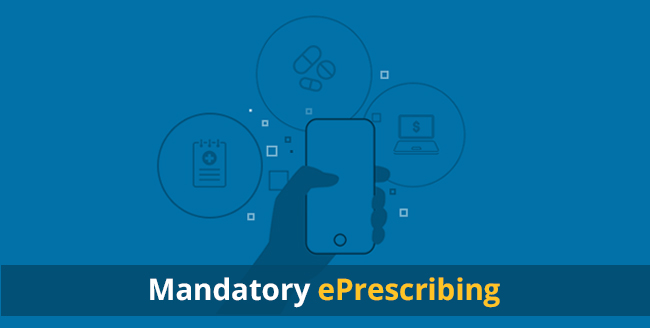In New York all medical providers must fully transition to e-Prescribing by March 27, 2016, or face penalties under the I-STOP Law. This means that all medications dispensed in NY, including prescriptions for legend drugs and schedule II, III, IV, and V controlled substances, be transmitted electronically to the pharmacy via a certified e-prescribing or electronic health record (EHR) tool.
For more information on complying with I-Stop, visit our I-Stop Resource Center. If you have not yet activated Electronic Prescription of Controlled Substances (EPCS) in your CureMD application, get in touch with us at premium@curemd.com .
How EPCS Works?
If you are Unable to meet the deadline you may be able to apply to the New York State Department of Health for a waiver. The department has said it will provide waivers for up to a year to prescribers in cases where electronic prescribing is not available because of economic hardship, technological limitations not within the prescriber’s control, or other exceptional circumstances.
Doctors who fail to follow the mandate “will be subject to a full range of disciplinary actions, including both civil and criminal penalties and fines,” according to the State Health Department.
Be prepared to handle Patients’ Concerns
If you were not prescribing electronically before, this transition can turn out to be a cultural change, not only for yourself, but for your patients too. Knowing what to expect can help you handle patients’ queries better.
- Your patients will no longer be able to shop around for the shortest waiting time or the best price for their medications. Drug formulary check in your EHR provides information to help you select medications while being appraised of the patient’s health plan formulary. This allows you and the patient to make the best informed decision regarding treatment options at the time of prescribing, preventing needless callbacks from the patient and/or pharmacy regarding on-formulary and off-formulary choices by your practice.
- They will have to come in knowing what pharmacy they want to use. If not in practice already, your front desk or nursing staff should ask all incoming patients to indicate their preferred pharmacy, and store the information in your EHR.
- If the medication at the pharmacy is either too expensive or not available, there will be no quick fix. You will have to cancel it by phone and prescribe again. Have a mechanism in place where your staff can handle such queries.
Have a best practice for electronic prescribing? Share them with other providers in the comments section below.

Join the Discussion!